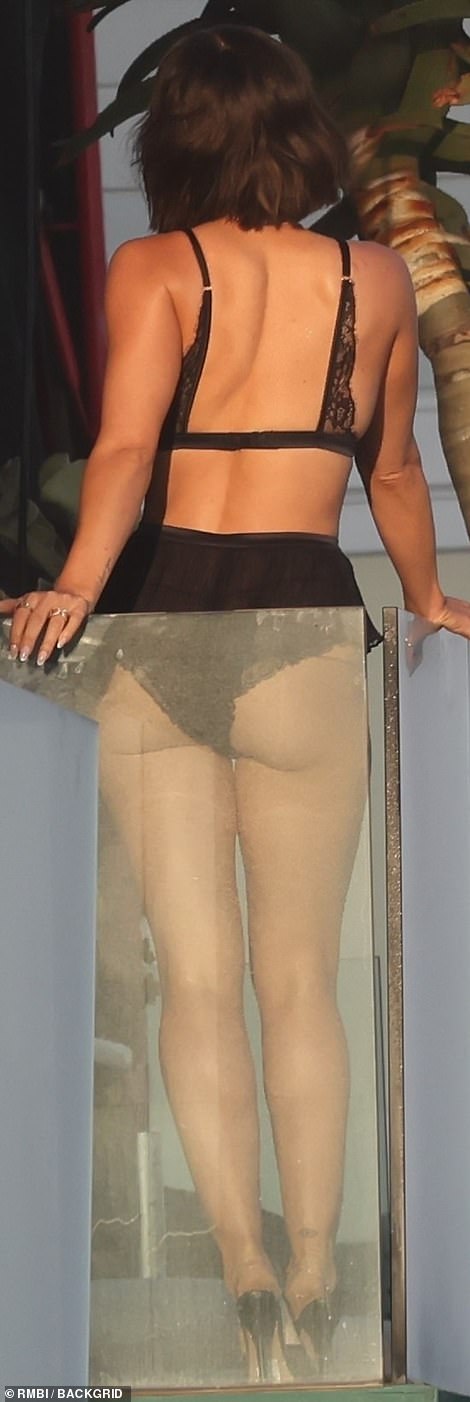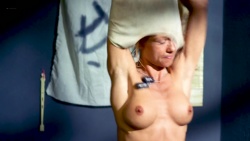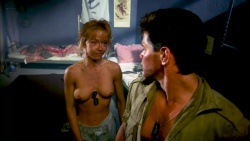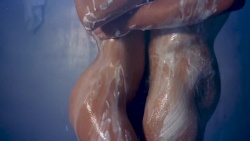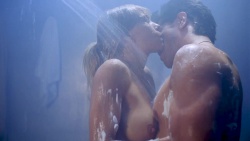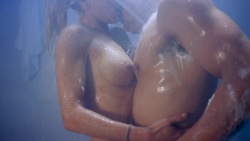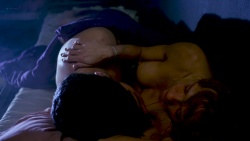A very nude non-nude scene from an episode of Versailles, as the ripe and beautiful Noemie emerges from the water.
Month: August 2021
In her bedroom encounter with Charles Dance, Emilia Fox got topless in an episode of Rebecca, an obscure mini-series from 1997. I believe this was her nude debut.
(Note: this is a sound clip, not a .gif. Just unmute it.)
Nobody would wear this. She’s basically naked. Not that there’s anything wrong with that. I did enjoy watching her walk.
Julia Anne grew up in Costa Mesa, California, where her classmates remembered her as beautiful, sweet and popular. On top of that she had been brilliant enough to skip a grade in elementary school, and would graduate from high school not long after her 17th birthday. Those California classmates were disappointed that her graduation would occur elsewhere. In her senior year of high school, her dad moved the family from Costa Mesa to Eugene, Oregon, where he assumed the presidency of a bank.
Her first couple of years after high school found Julia at the University of Oregon. It was there that she met a novelist and LSD advocate named Ken Kesey, a famous counter-cultural figure and a Eugene native. Kesey recruited her to be on the legendary Magic Bus with his Merry Pranksters, as immortalized in a Tom Wolfe book, “The Electric Kool-Aid Acid Test.” According to Peter Biskind in “Easy Riders, Raging Bulls,” Julia developed quite a drug dependency in her months with Kesey, but given her photogenic countenance, it was almost inevitable that she would get offered a chance to be in movies. She made her first film appearance in 1969 as an uncredited extra in a topical film about campus unrest, Getting Straight, which did location shooting on the campus of nearby Lane Community College. Her father told a local reporter that she originally had a speaking part, but her dialogue was cut in the final edit.
Shortly thereafter, she moved to New York where she had some success as a fashion model for the Eileen Ford Agency, even appearing in some prestigious magazines. One of her childhood friends from Costa Mesa visited her in this period and was disappointed to find that “she had become part of the Andy Warhol scene.” Perhaps New York stole her innocence, but she made contacts there which, according to Biskind, led to a romance with aspiring filmmaker Henry Jaglom, who used her in a background role in his first film, A Safe Place.
At that point she had basically been just window dressing in her two films. She probably had no SAG card, since she was credited as “Julie Robinson” in A Safe Place, despite the fact there was already a well-known actress with that name – the wife of Harry Belafonte! She eventually took Julia Anne Robinson as her SAG identity in order to play a small but important speaking role opposite Jerry Orbach in a low-budget Canadian film called A Fan’s Notes. Julia did a very brief and partially obscured topless scene in that failed adaptation of Fred Exley’s eponymous novel.
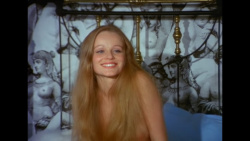
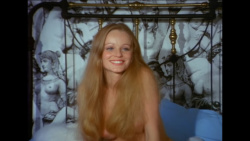
Her film career might have ended right there except that producer/director Bob Rafelson met her and fell in love with her. Rafelson always insisted that the romance was never consummated, but it was love nonetheless, if for nothing other than Rafelson’s idealized version of her, the great star he could create from an ethereal, seemingly innocent beauty. Rafelson was about to direct a film called The King of Marvin Gardens, featuring three up-and-coming Hollywood heavyweights: Jack Nicholson, Bruce Dern and Ellen Burstyn. That film was basically a four character play, and Rafelson made the daring decision to cast Julia as his fourth star, thus pairing the novice with three iconic stars, all of whom ended up with Oscar nominations in their careers.
It was a mistake, generated by a combination of Rafelson’s infatuation with Julia and a massive ego that convinced him that he could make her a star. Jacob Brackman, who wrote the screenplay for the film, said:
“Nobody wanted him to cast Julie (sic). He had a wild hair up his ass, an instinct that he was going to go with. He had a hard time acknowledging that his instinct was incorrect. He had a thing for her, but her performance destroyed it. By the time he was seeing the dailies, he was no longer in love with her.”
She did some nudity in that film:
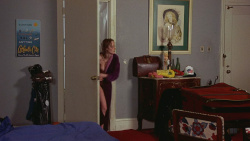
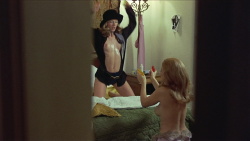
At that point her film career did end. Even before the film was released, her parents told a local newspaper that she was not interested in performing in any more movies.
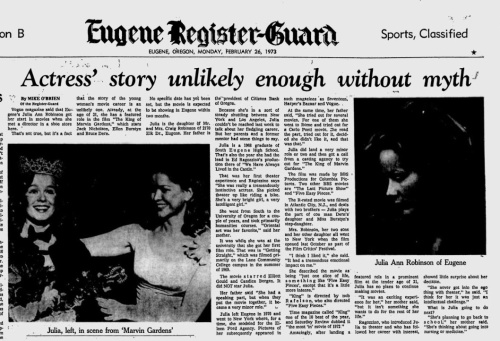
She moved back to Eugene. She was still only 21 and had rubbed elbows with some of the greatest present and future stars in the cultural firmament. She had co-starred with Jack Nicholson, had hung with Andy Warhol, and had partied with the Merry Pranksters, but was back at Lane Community College, playing small roles in juco theater. One night, after the final performance of A Man For All Seasons, she declined an invitation to the cast party and went home to her apartment, where she died in a fire. Perhaps she was the victim of a faulty thermostat, as described below in the Eugene press, or perhaps she fell asleep with a lit cigarette, as reported elsewhere. Either way, her life was over at 24.
SIDEBAR:
Somewhere in her travels she had lost her name. According to the local newspaper’s account of her death, as well as her Oregon death certificate, her name was “Julia Ann Robinson,” but her SAG identity had been “Julia Anne Robinson.” Her high school yearbook in Oregon had called her “Julia Robinson,” but the one in California had called her “Julie Robinson,” and her high school class page now refers to her as “Julie Anne Robinson.” All the people in Hollywood, like her childhood friends from Costa Mesa, always referred to her as Julie rather than Julia, but the Oregonian who directed her performances in high school and community college called her Julia.
I didn’t realize until just now that there is a tape of Andy’s legendary “milk and cookies” performance. Not only did he take the audience out for a snack after the performance, but he continued the show the next day on the Staten Island Ferry, where he did more of his Intergender Wrestling schtick and more. Pics of the ferry gig here. Story of the concert here. Tape below.
Andy remembered by a childhood friend.

Susan George began her career as a child actress, and in fact, began her screen nudity the same way. She was still 17, a child by our current standards, when she did some nude scenes in an obscure British film called The Strange Affair, which was about a guy who gets into trouble by having an affair with (wait for it) an underage girl. Few people saw that film outside of Britain, and I don’t even know if it’s available in any sanctioned print these days, but many more people would get to admire Susan’s shape three years later (1971), when she made quite an international splash by exposing her impressive figure as the co-star of Sam Peckinpah’s Straw Dogs. Throughout the seventies did some additional nude scenes in Out of Season (1975), Tintorero (1977) and the much-reviled Mandingo (1975). She capped off her nudography when she took off her top one last time for The House Where Evil Dwells (1982).
That title may make it sound like an MSNBC show about Mar-a-Lago, but it’s actually a horror film about a house in Japan that is permeated by the residual evil of a murder-suicide in the previous century. Well, that’s the premise until the end of the film, when the same house is haunted by the ghost of Doug McClure. It may sound like I’m fuckin’ witcha, but that’s really what happens.
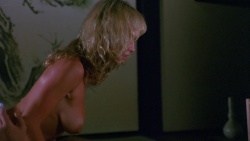
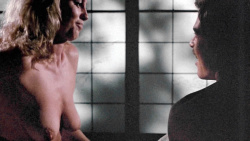
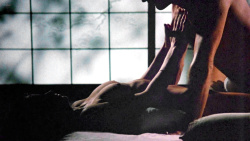
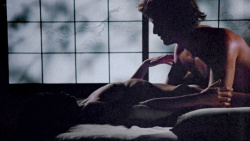
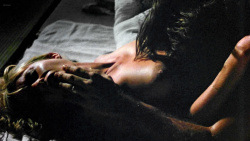
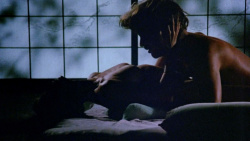
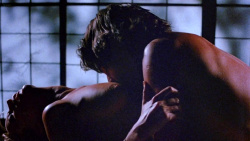
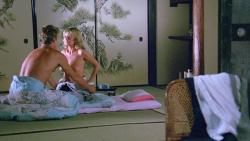
I learned an important cultural lesson from this film. If you rent one of those houses in Japan with the paper walls, make sure you have the lights between you and the exterior walls, not the other way around. If you do this wrong, you will be giving a shadow-show to your neighbors every night, and if you’re have having sex, your little performance will star Mr. Happy-san. This rule would be especially important if you are fucking a tougher guy’s wife.
Or you could just turn off the lights.
My review covers this film in fairly substantial detail, somewhere in between my usual pointless digressions.
The third one is basically her butt in skimpy panties, seasoned with just a soupcon of weirdness.
Full-sized version here

